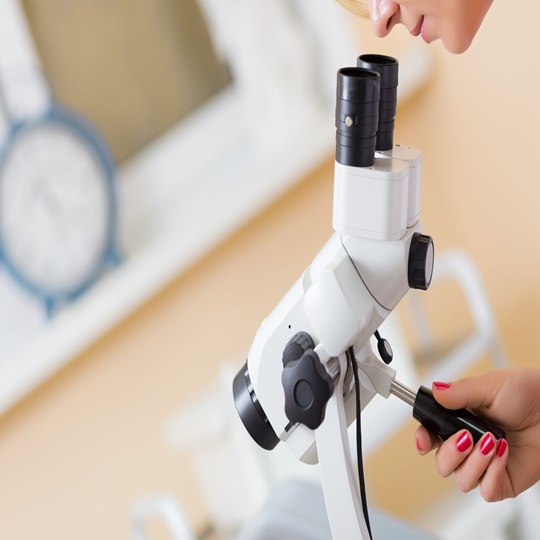What is Colposcopy and Why is it Done?
Colposcopy is a gynecological examination method that allows detailed examination of the cervix and vaginal surfaces. This procedure is usually performed in cases where abnormal cell changes are detected as a result of a smear test (Pap smear) or in the presence of HPV (Human Papilloma Virus) infection. In the words of Assoc. Prof. Dr. Esra Özbaşlı, “Colposcopy is of critical importance for the evaluation of cervical intraepithelial lesions (CIL) and helps determine the necessary treatment.”
During this examination, a special microscope called a colposcope is used. This device allows the tissues to be seen more clearly thanks to its light and magnification features. Colposcopy is used to detect abnormal cell changes, lesions or other potential problems on the cervix and vaginal surfaces. This examination is important for early diagnosis of cervical pre-cancerous lesions.
Colposcopy is recommended especially in women with abnormal smear test results or those with HPV infection. Colposcopy helps determine the degree of these conditions and helps create a treatment plan. In addition, colposcopic examinations performed at the necessary times allow abnormal cell changes to be monitored and kept under control.
Therefore, colposcopy has an important place in gynecological health and is applied as an advanced diagnostic method, especially in some abnormal smear test results or in women with high-risk HPV test results.
Is Colposcopy a Difficult Procedure?
Colposcopy can often be perceived as a difficult or painful procedure, but this usually depends on the person’s perception and experience. Assoc. Prof. Dr. Esra Özbaşlı states, “Colposcopy may cause discomfort in some women during the procedure, but in most cases it is not a painful procedure.”
During colposcopy, the vagina is opened using a tool called a vaginal speculum, and after appropriate vaginal cleaning, Monsel’s solution or Acetic Acid is applied to the surface of the vagina and cervix. These solutions allow abnormal cells to be marked. Thus, the cervix and vaginal surfaces are examined with the colposcopy device. Millimetric samples are taken from suspicious areas and sent to pathology for examination. At this stage, some women may feel slight discomfort, but it is usually not painful. During the examination, the doctor’s delicate and gentle work can increase the patient’s comfort.
Whether colposcopy is difficult or not is also related to the person’s emotional state. Especially when there are abnormal smear test results or worrying situations such as HPV infection, patients may feel more stressed. However, in such cases, Assoc. Prof. Dr. Esra ÖZBAŞLI, it is important to establish open communication and share your concerns. It is important to work with our patients to make the procedure as convenient and comfortable as possible.
How Long Does Colposcopy Take?
Colposcopy is usually a fairly quick procedure, usually completed in 10 to 20 minutes. Colposcopy is usually completed in a short time, allowing patients to return to their daily activities immediately.
After the colposcopy, your doctor will evaluate the findings and recommend additional treatment or follow-up plans if necessary. However, since the procedure is usually short, patients are allowed to return to their daily activities immediately.
As a result, colposcopy is usually a quick procedure, and the impact on patients’ daily lives is minimal. Therefore, taking the time to have this important examination is important for health.







